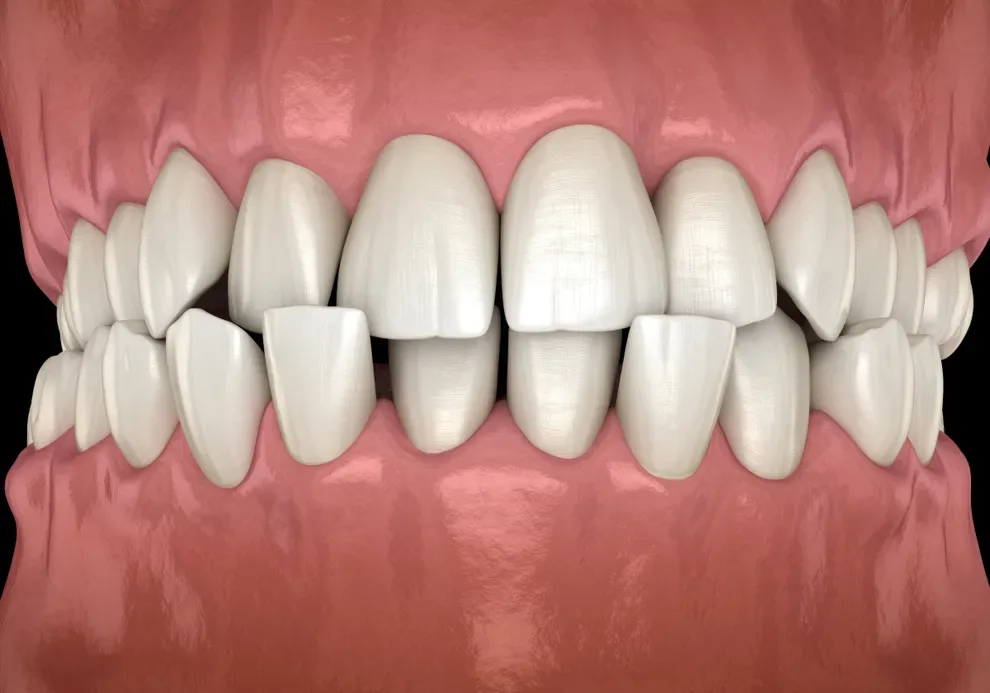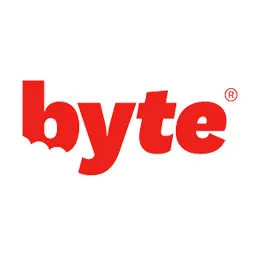Crossbite Treatment

Table of Contents
- Key Facts
- Understanding Crossbites
- Treatments for Crossbites
- Correcting Certain Types
- Clear Aligner Therapy
- Do Crossbites Correct by Themselves?
- How is Crossbite Diagnosed?
- Frequently Asked Questions
A crossbite is a type of malocclusion, or teeth misalignment. With a crossbite, the upper teeth fit inside the lower teeth. This could involve one tooth or multiple teeth. The back and/or front teeth may be affected.
A crossbite is usually caused by genetics, childhood oral habits like thumb sucking or pacifier use, an accident or trauma, or a congenital condition.
Treatments may include jaw surgery, the use of orthodontic devices, tooth removal, replacing missing teeth, braces, or the use of clear aligners.
Key Facts about Crossbite
Crossbite is a type of teeth misalignment, or malocclusion, in which the upper teeth sit inside the lower teeth.
There are two types of crossbite: posterior crossbite (back upper teeth sit inside lower teeth) and anterior crossbite (top lower teeth sit inside lower teeth).
Treatment options for crossbites include jaw surgery, tooth removal, the use of orthodontic devices, braces, and clear aligners.
Understanding Crossbites
You may have crooked teeth or a crooked smile, but these are broad terms that could refer to many underlying causes of misaligned teeth or jaws. These misalignments are called .
One type of malocclusion is a crossbite, which is a misalignment of the upper and lower teeth, so one set covers the outside of the other when they meet. This alignment problem can occur because the upper jaw is larger than the lower jaw or vice versa.
Crossbites at the back of the mouth cause teeth grinding, jaw problems and pain, abnormal facial development, and wear on the teeth. This can lead to decay, tooth damage, and gum disease.
Crossbites often become apparent as a child loses their baby teeth, and their permanent teeth start to come in. This is a period called mixed dentition because not all the permanent teeth have come in.
Dentists try to catch this misalignment early in life because crossbites are simpler to manage and adjust in adolescents and teens than in adults. However, there are still options for adults who have an uncorrected crossbite. Treatment methods range from aligners or braces to surgery.
Treatments for Crossbites
How your crossbite is treated will depend on how severe it is and what’s causing it.
Severe crossbites caused by a jaw misalignment may require jaw surgery. If there’s crowding, a tooth or multiple teeth may need to be removed to give teeth room to move into a corrected position. Even if these procedures are needed, an individual with crossbite will also need orthodontic treatment to treat the malocclusion.
Orthodontic treatments for crossbite include the following. This table summarizes your options at a glance:
| What Is It? | Who Is It For? | Benefits | Drawbacks |
Orthodontic devices | Headgear, palatal expanders | Adolescents | Could reduce the need for lengthy treatment with braces | Can cause pain |
Braces | Brackets glued to teeth are connected by wires | Adolescents and adults | Suitable for significant crossbite correction | Can be painful and make dental cleaning difficult |
Aligners | Clear trays fit over your teeth and guide them to new positions | Adolescents and adults | Suitable for mild to moderate cases; less visible and painful than braces | Not right for all types of crossbite |
Orthodontic treatments for crossbite include the following:
Correcting Certain Types of Crossbites
Any of the above treatment options may be used to correct either type of crossbite depending upon the individual case and severity, however, some treatments may be more helpful for a specific crossbite type.
Clear Aligner Therapy May Help Crossbites
Many adults remember having “metal mouth” as kids and do not want braces again. As a result, they avoid orthodontic treatment, thinking braces are the only option to correct their bite. Fortunately, there are options available that are much less intrusive than traditional braces or other devices.
Depending on the severity of your crossbite, you may be able to use aligners to correct your smile, and they are much subtler than braces. Clear aligners slip over the teeth, and they are often difficult to see unless someone is very close to you. If you have an important meeting or engagement, you can remove the aligners for short periods of time.
Aligners can be used for mild-to-moderate cases of crossbite. With an average treatment time of four to six months, the option of a completely at-home doctor-monitored treatment, and affordable pricing and payment plans, aligners are an attractive option. An orthodontic professional can determine if they’re right for you.
If you’re not sure that clear aligners can fix your crossbite, you can take Byte’s 30-second assessment and (if advised) order an easy at-home impression kit to determine if you’re a candidate for aligners. If the impression kit reveals that aligners aren’t an option for you, Byte will refund you.
Do Crossbites Ever Correct on their Own?
While there are instances in which a childhood crossbite corrects itself later in life, researchers aren’t sure how often this happens.
In 2023, researchers examined studies about the self-correction rates of crossbites in children. Researchers found that many studies had design flaws, and as a result, it’s not possible to determine how often a crossbite might fix itself.
While many children receive treatment for crossbites at a young age, adults can develop crossbites due to genetics, poor hygiene, health, or diet. Even if you had braces as a child, you may need a bite adjustment later in life.
Signs & symptoms of crossbite
The American Association of Orthodontists says the most common symptom of a crossbite is how your teeth feel when you bite. If your upper teeth fit inside the lower in the back and/or the front when you bite normally, you could have a crossbite.
Other symptoms sometimes associated with crossbite include the following:
Headaches
Jaw pain
Dental decay
Difficulty chewing
What are the risks of avoiding crossbite treatment?
There are likely areas that are hard to clean in your mouth—narrow passageways between crowded or crooked teeth as well as empty areas between gaps. Bad bacteria and food particles can accumulate in these areas, which can lead to decay, gum irritation, and bad breath. Eventually, it could lead to cavities, gum disease, and even tooth loss.
An untreated crossbite can also lead to jaw pain. The temporomandibular joint that supports jaw movement must work harder when your teeth don’t line up properly. In time, your ligaments can stretch, and the muscles can strain.
Crossbites can also cause direct contact between your upper and lower teeth. You could chip or crack your teeth while doing everyday things, such as talking or eating.
How is a Crossbite Diagnosed by your Dentist?
In an average, healthy bite with proper alignment, the upper teeth will sit just a little outside of the lower teeth. This is true with the front and back teeth, on all sides of the mouth. When the teeth do not meet correctly in one or more of these dimensions, you have a crossbite.
The American Association of Orthodontists (AAO) defines a crossbite as the abnormal relationship of a tooth or a few teeth to their opposing teeth.
There are two basic types of crossbite:
